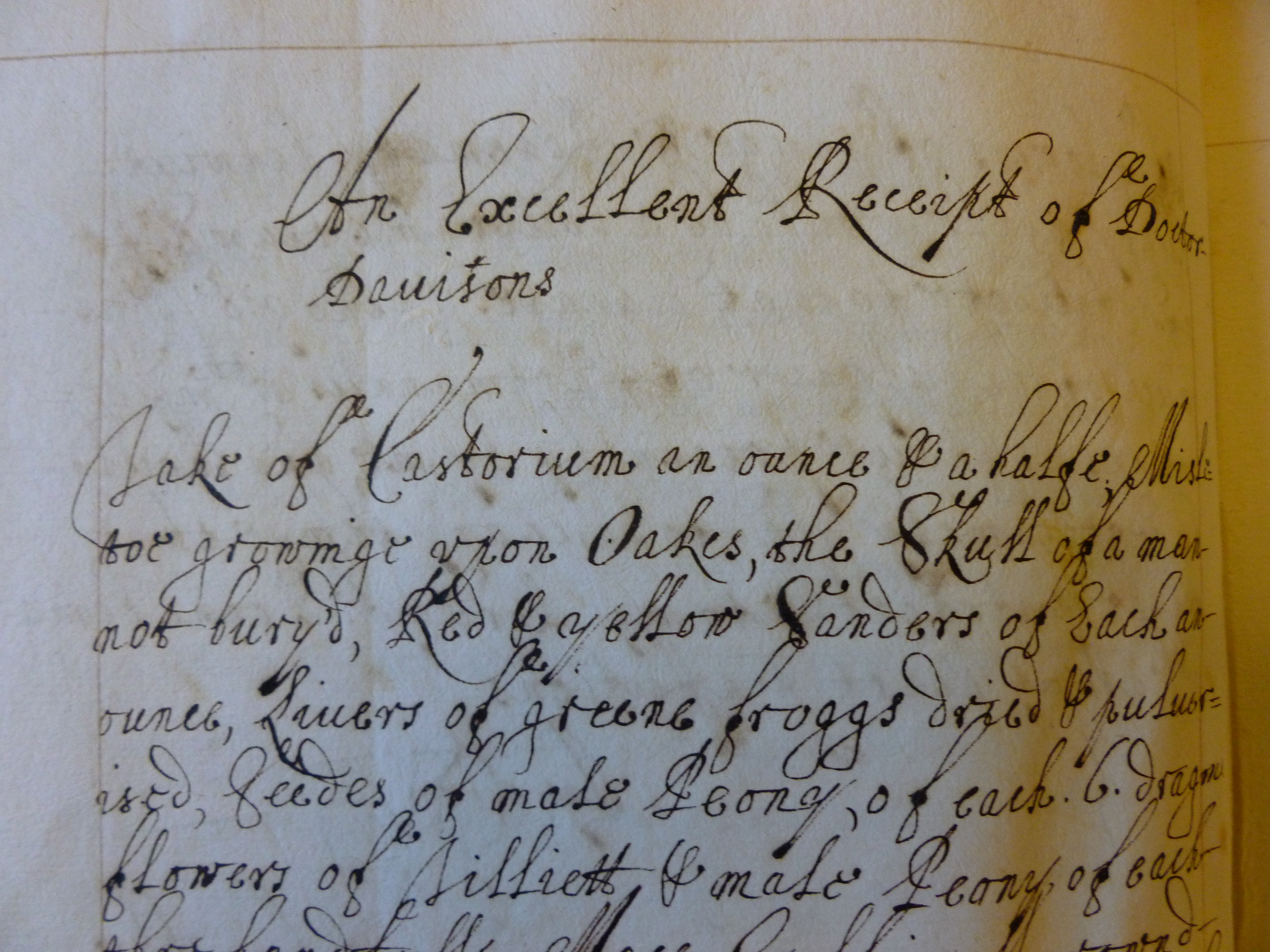
December 10, 2013, by H Cotterill
Feeling under the weather? Try frog’s liver, peacock dung and just a dash of dead man’s skull
The above items all form part of a medical recipe contained in a 17th century volume belonging to the Duke of Newcastle. Many family and estate collections contain medical receipt books, in which recipes and instructions for the treatment of various maladies are carefully preserved for future generations. In an age before the widespread provision of healthcare families routinely concocted their own ‘cures’ following instructions from doctors, family members and friends. The recipe book of the Duke of Newcastle (Ref: Pw V 90), contains hundreds of these medical recipes (as well as some much more palatable ones for food). Ingredients range from the easily recognisable plant and mineral extracts to items that wouldn’t look out of place in a witches spell book. Among the more outlandish recipes is ‘Doctor Farrers Fortification’, the steps for making which include burning oak in a clean chimney, filtering the ashes through distilled rain water and leaving the mixture to stand in a cellar.
The cures contained in receipt books are fascinating for the light that they shed on attitudes to and treatment of illness. The Newcastle receipt book contains copies of letters from various individuals offering their own remedies; providing evidence of the way in which treatments were circulated and the value placed on them. The strength, sex and age of the patient is often taken into account, with differing quantities of medicine prescribed for adults and children. There is also evidence to suggest that a popular remedy would be used to treat many, often widely differing, illnesses. The Duke of Northumberland’s great cordial is recorded as, ‘the surest remedy against all poisons and the plague’ whilst the ‘Antimoniall Cup’ treats (among other things), stomach ache, headache, ague (fever), vertigo, lethargy, and ‘the green sicknesse’ (anemia), whilst taken as a preventative it can stop the onset of gout, measles, sciatica and pox.
Still curious about that frog’s liver? The full recipe for the medicine is given below:
“An Excellent Receipt of Doctor Davisons
Take of Castorium an ounce & a halfe, Misletoe growinge upon Oakes, the Skull of a man not bury’d, Red & yellow Sanders of Each an ounce, Livers of greene frogs dried & pulverised, Seedes of male Peony, of each 6 dragmes flowers of Tilliet & male Peony of each thre handfuls, Mace, Gallingall, rownd Pepper, Long Pepper, Mummie, of each thre Dragmes, of Little & great Cardamams, of each 2 dragms, of white Amber, an ounce & a halfe, Saffran, Dung of white Peacocks of Each an ounce, of all these drawe the Tincture wth Spirit of wine well rectified. Straine the Tincture through a Paper and Evaporate it in Marys Bathe till it be wasted to the halfe, Then you shall add to it Salt of Pearles and Corralls, of each an ounce, Sulpher Narcotick of Hartmannus three ounces, then Continue the evaporating of it till it come to the Consistance of Hony
When you doe give this, you must add to each quantity you give at once, two drops of oyle of Camfor.”
Manuscripts and Special Collections will be closing on Friday 20th December 2013 and reopening on Thursday 2nd January 2014. We would like to wish all our readers a happy – and healthy – Christmas and New Year!
No comments yet, fill out a comment to be the first

Leave a Reply